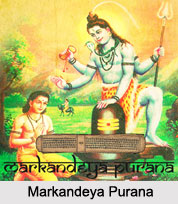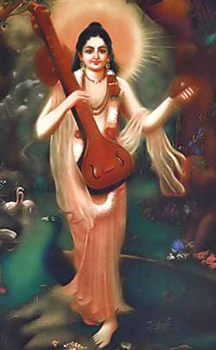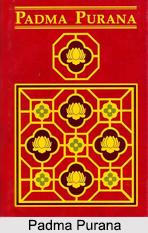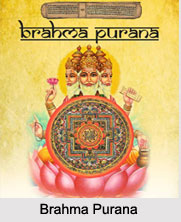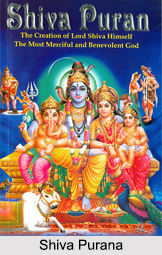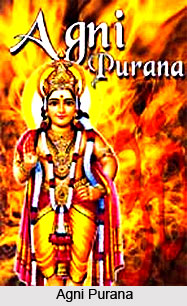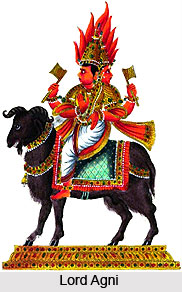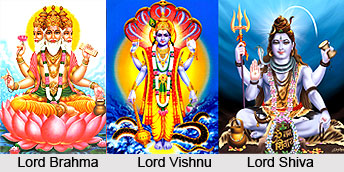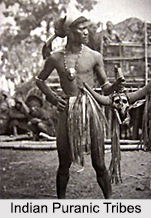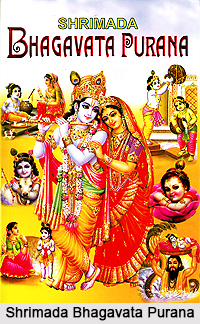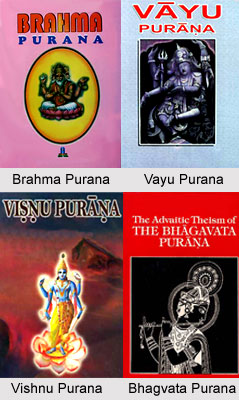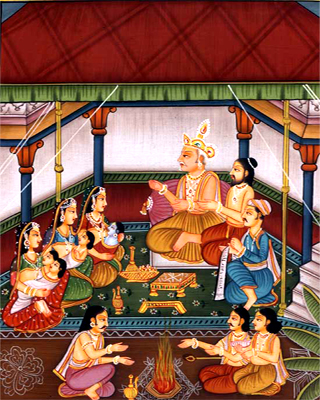 One of the most important episodes in Ramayana is the birth of Lord Rama. After the Putra-Kameshti Yagna four sons were born to the King of Ayodhya. According to legends it is Lord Vishnu who is born as Rama and his brothers. The deities assembled to receive their share of the offerings made, and being assembled together they approached Brahma with a petition. They stated that a demon named Ravana had been oppressing them and they had been suffering patiently as Lord Brahma had granted him a boon. As per this boon, he cannot be slain by gandharvas, yakshas, rakshasas or gods. On hearing this Brahma replied that Ravana disdained to ask immunity from common man. Hence, he would be defeated at the hands of a man only. At that moment Lord Vishnu arrived, clad in yellow robes, bearing mace, discus and conch and riding upon Garuda. The devatas paid reverence to him and requested him to take birth as the four sons of Dasharatha for the destruction of the wily and irrepressible Ravana.
One of the most important episodes in Ramayana is the birth of Lord Rama. After the Putra-Kameshti Yagna four sons were born to the King of Ayodhya. According to legends it is Lord Vishnu who is born as Rama and his brothers. The deities assembled to receive their share of the offerings made, and being assembled together they approached Brahma with a petition. They stated that a demon named Ravana had been oppressing them and they had been suffering patiently as Lord Brahma had granted him a boon. As per this boon, he cannot be slain by gandharvas, yakshas, rakshasas or gods. On hearing this Brahma replied that Ravana disdained to ask immunity from common man. Hence, he would be defeated at the hands of a man only. At that moment Lord Vishnu arrived, clad in yellow robes, bearing mace, discus and conch and riding upon Garuda. The devatas paid reverence to him and requested him to take birth as the four sons of Dasharatha for the destruction of the wily and irrepressible Ravana.
During this time, Dasaratha was carrying out the yagna. The Lord appeared as the messenger from of God amidst the fire flame and handed over to the King the divine rice and milk and asked him to distribute it amongst his wives. Dasaratha, overjoyed, carried the divine food and gave a portion of it to Kaushalya, to Sumitra, and another to Kaikeyi, and then the fourth portion to Sumitra again. In due time four sons were born of them: from Kaushalya, Rama; from Kaikeyi, Bharata; and from Sumitra, Lakshmana and Shatrughna. These names were given them by sage Vashishtha. In the mean time, the gods created monkey-hosts, brave and wise and swift, shape-shifters to be the helpers of Lord Rama in the combat with rakshasas.
As time flew by, the four sons of Dasaratha grew up as models of virtue and chivalry. The favourite of the King among them was Rama. His father adored his eldest son. Rama was endowed with the wisdom of the Vedas, was an expert in warfare, was courteous but it was his sense of justice that set him apart. Like a faithful shadow Lakshmana followed Rama, sharing with him everything that was his own, and guarding him when he went abroad to exercise or hunt. In a similar way Shatrughna attached himself to Bharata.
When the princes have reached the age of sixteen, sage Vishwamitra arrived at Ayodhya. The sage was born as kshatriya, yet the practice of severe austerities had won him the status of brahma-rishi. He dwelt in the Shaiva hermitage called Siddhashrama, and came thence to ask a boon from Dasharatha. Two rakshasas, Maricha and Suvahu, supported by the wicked Ravana, continually disturbed his sacrifices and polluted his sacred fire; none but Rama could overcome these devils. Dasharatha welcomed the sage with open arms and was ready to help him by all means. However when he heard the purpose of his arrival, the king of Ayodhya was worried. He could not send off the young prince to fight demons. At the same time he could not go back on his words as well. With a heavy heart he let Rama and Lakshmana go away with Vishwamitra for ten days.
Vishwamitra led the way and the two brothers, carrying their bows and swords, followed the sage. On arriving at the hermitage Vishwamitra and the other priests began their yagna; and when the rakshasas rushed forward in horrid shapes to disrupt the holy ritual, Rama wounded and put to flight Maricha and Suvahu, and slew the others demons.

